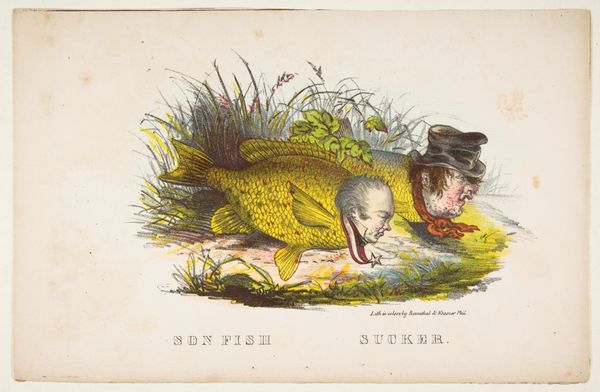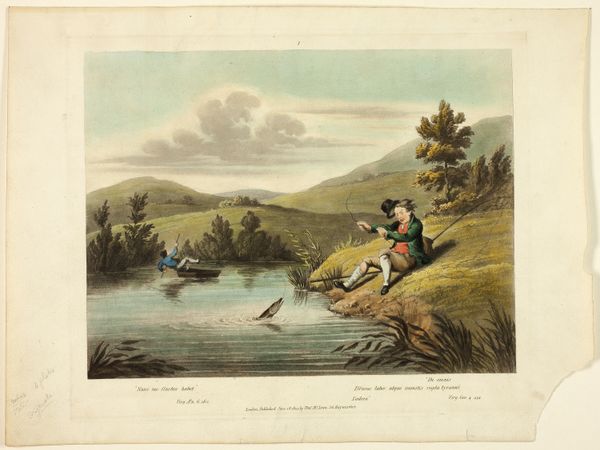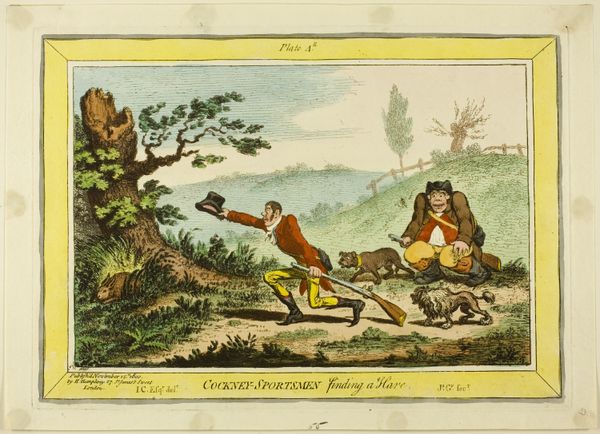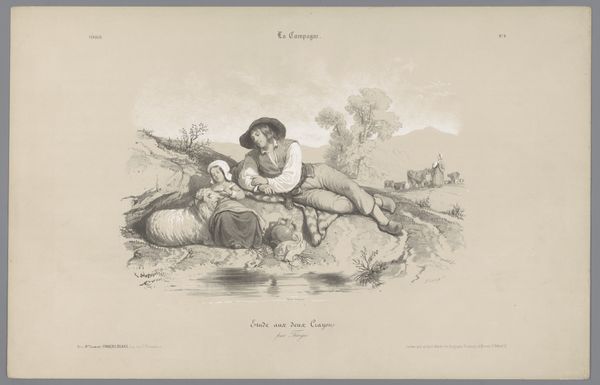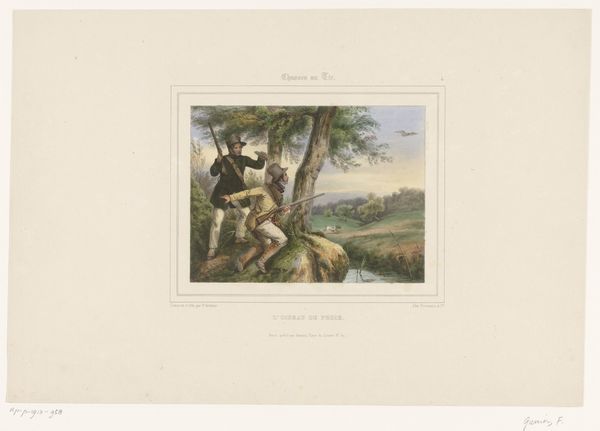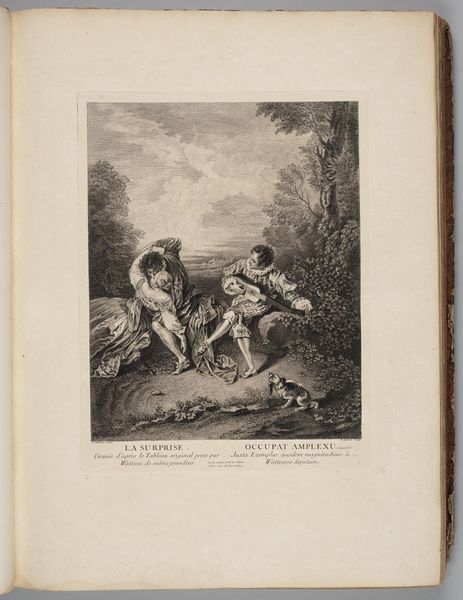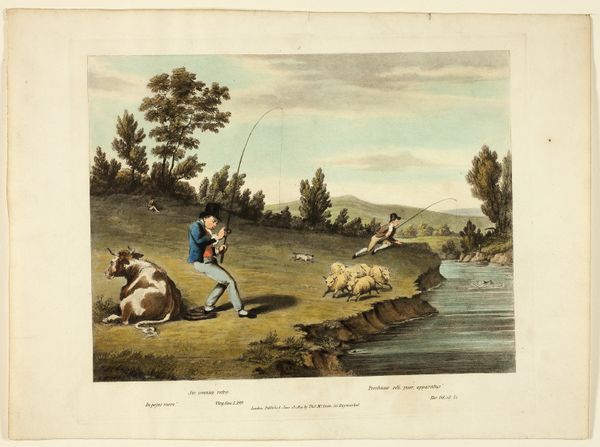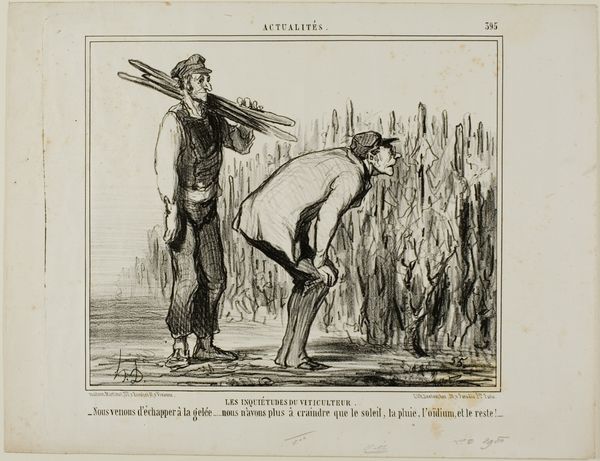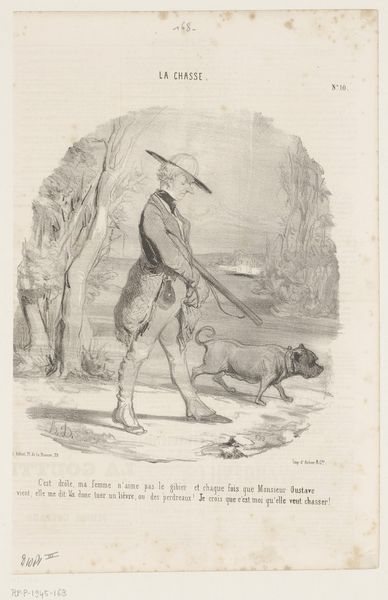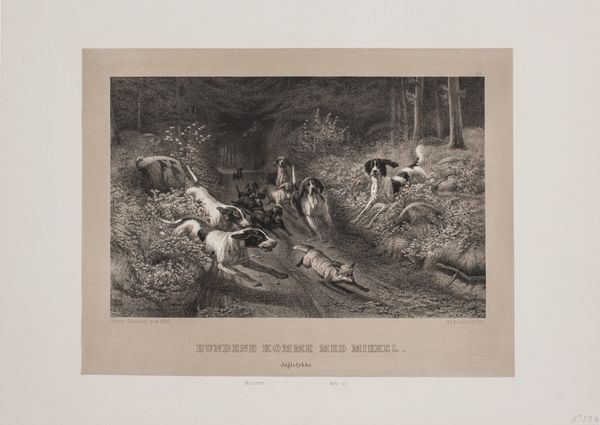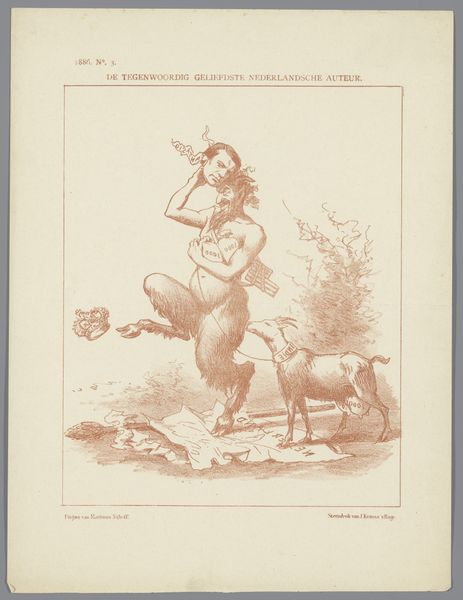
Dimensions: height 264 mm, width 350 mm
Copyright: Rijks Museum: Open Domain
Curator: Honoré Daumier's lithograph, dating from 1854, titled "Riviergod bekijkt Russische soldaten," offers a sardonic commentary on war. The work currently resides in the Rijksmuseum. Editor: Good heavens, what a grumpy river god! He looks like he’s just stubbed his toe and noticed an invading army all at once. The Romantic style somehow amplifies the caricature, giving him this sort of world-weary grandeur. Curator: Precisely. Note the carefully constructed composition: The river god, representing the Pruth, is positioned on the right, visually dominating the scene through scale and placement, against the approaching diminutive Russian soldiers. Daumier employs contrasting values—the dark figure against the light sky—to emphasize the god's looming presence. Editor: And his posture! Slumped against that comically oversized jug labeled "PRUT," he’s practically the embodiment of dejected patriotism. You can almost hear him muttering about those darned kids marching all over his riverbank. Is that water flowing out of his urn, or is he just weeping into the landscape? Curator: Both interpretations are viable. The river, suggested by the watery tones and the flowing form, mirrors the turmoil implied by the distant troops. The god’s isolation and dejection, rendered with thick, expressive lines, function as an allegory for the nation's perceived helplessness. The landscape itself is charged with melancholic romanticism. Editor: It’s a brilliant contrast, really. This powerful, mythical being utterly dwarfed by a political situation, and by his own frustration. He seems utterly powerless. Is Daumier implying something about the futility of resisting these historical forces, about how even gods can become victims of circumstance? Curator: Precisely. The formal arrangement suggests a profound powerlessness—a classical deity reduced to impotent observation by contemporary conflict. The lithographic medium, with its capacity for detailed linework and tonal variation, enhances the work's satiric bite, transforming a moment of national crisis into poignant social commentary. Editor: Well, it’s certainly left me contemplating the absurdity of it all. It's both funny and a little heartbreaking. Curator: Indeed, Daumier has successfully woven social commentary with potent visual language, transforming geopolitical anxieties into art.
Comments
No comments
Be the first to comment and join the conversation on the ultimate creative platform.
